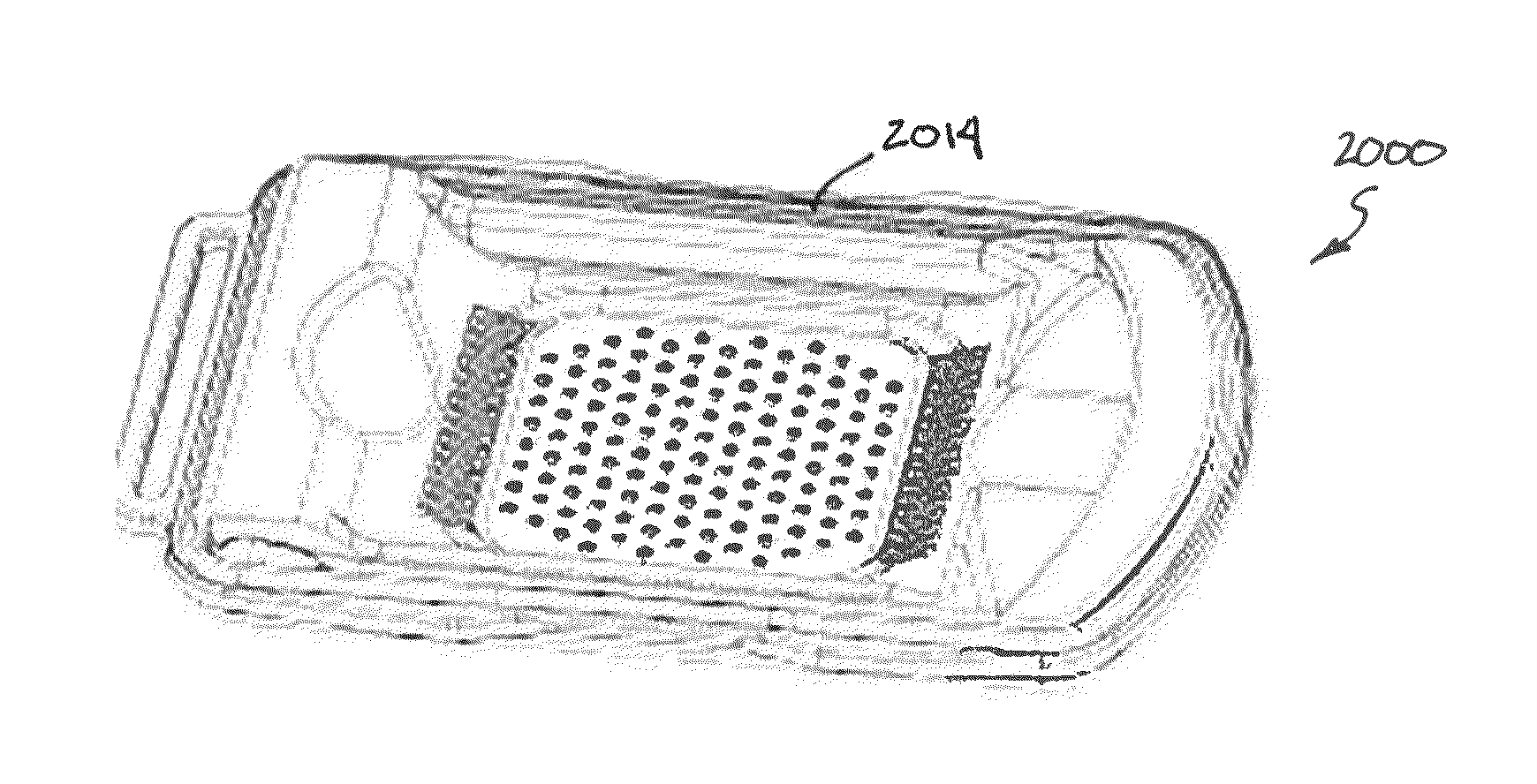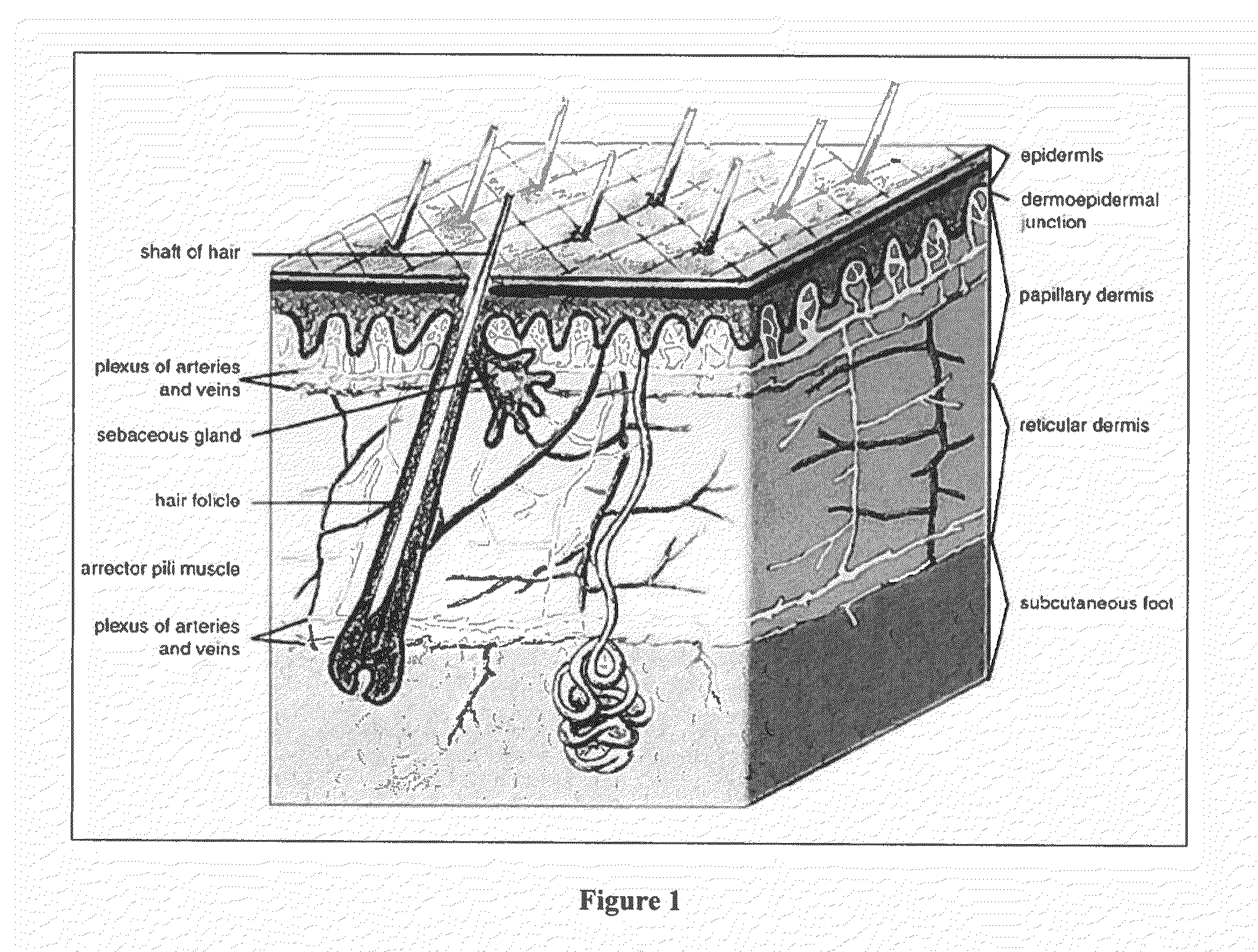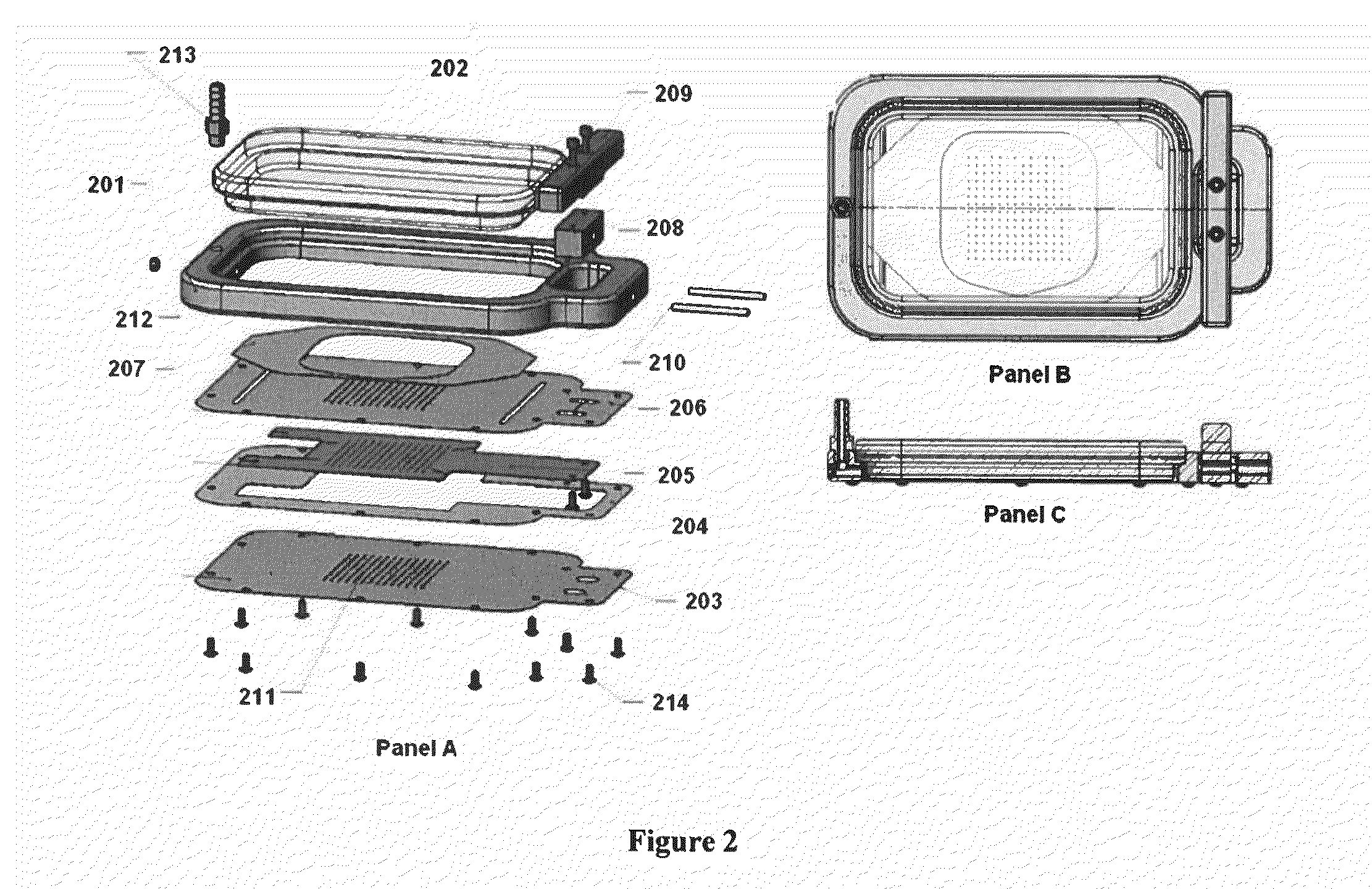Microblister skin grafting
a micro-blister and skin grafting technology, applied in the field of micro-blister skin grafting, can solve the problems of skin tissue being subject to many forms of damage, skin grafting involves certain risks, trauma and wound generation at the donor site, etc., and achieves the effect of improving design features and reducing patient harm and discomfor
- Summary
- Abstract
- Description
- Claims
- Application Information
AI Technical Summary
Benefits of technology
Problems solved by technology
Method used
Image
Examples
Embodiment Construction
[0094]The present invention generally relates to a single device that can raise a blister (e.g., a suction blister) and cut the raised blister, i.e., a blister raising device integrated with a cutting member. Such devices are useful for harvesting skin grafts.
[0095]In certain embodiments, a device as shown in FIG. 2 panels A-C is used to raise and cut a plurality of skin grafts. Device 200 includes a frame 201 and a lid 202. Fitted into the frame is a bottom plate 203, a cutter grid plate 204, a cutter plate 205, and a top plate 206. The bottom plate 203, the cutter plate 205, and the top plate 206, each include a hole array 211. Once assembled, the hole array 211 of each of plates 203, 205, and 206 are aligned. The size of the holes in the hole array will depend on the size of the graft needed, with larger holes being used to produce larger grafts. A first substrate 207 interacts with the top plate 206 and will receive the harvested grafts.
[0096]Device 200 further includes an actua...
PUM
 Login to View More
Login to View More Abstract
Description
Claims
Application Information
 Login to View More
Login to View More - R&D
- Intellectual Property
- Life Sciences
- Materials
- Tech Scout
- Unparalleled Data Quality
- Higher Quality Content
- 60% Fewer Hallucinations
Browse by: Latest US Patents, China's latest patents, Technical Efficacy Thesaurus, Application Domain, Technology Topic, Popular Technical Reports.
© 2025 PatSnap. All rights reserved.Legal|Privacy policy|Modern Slavery Act Transparency Statement|Sitemap|About US| Contact US: help@patsnap.com



